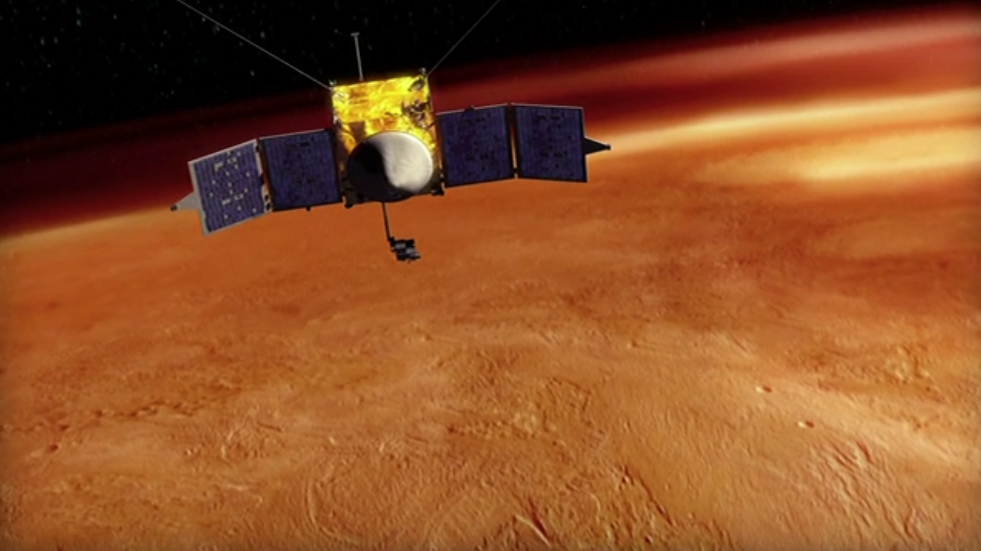

| Visitors Now: | |
| Total Visits: | |
| Total Stories: |

| Story Views | |
| Now: | |
| Last Hour: | |
| Last 24 Hours: | |
| Total: | |
Going to Mars
Studying Mars’s Atmosphere

The MAVEN mission will orbit Mars to study its upper atmosphere and near-Mars interplanetary space. COURTESY NASA/MAVEN Mission Team.
I’m going to Mars tomorrow. Well, not directly TO the Red Planet, but to a workshop about the MAVEN mission, which launches to Mars in November. MAVEN stands for Mars Atmosphere and Volatile Evolution Mission, and it’s set to study the Martian upper atmosphere and its interactions with the Sun and solar wind. So, there are no cameras on board, but it is bristling with an array of sensors that will sample the atmospheric gases and sense their interplay with each other and the solar wind.
The Martian atmosphere has an interesting and still-not-completely understood history. It is very thin, contains mostly carbon dioxide, with nitrogen, water vapor and oxygen. Planetary scientists know it was a much more substantial atmosphere in the planet’s early days. Water existed on the surface long ago, but today we see no lakes or oceans or rivers. Just dry riverbeds and dessicated lakeshores. Today’s desert landscapes and sparse atmosphere (by comparison) spurs questions about what happened to the Red Planet in the past to cause it to lose much of its blanket of air and its abundant supply of water.
MAVEN will play a part in helping understand what happened. Its main role is to explore what role the atmospheric loss played in changing Mars’s climate. From its elliptical orbit some 150 kilometers by 6,000 kilometers around Mars, the spacecraft will have ample opportunity to sample the upper atmosphere and the near-planet environment in Mars interplanetary space. It will also dip down a bit deeper into the atmosphere, sampling volatiles (gases, etc.) to help understand the composition of Mars’s atmosphere at several different places. Its instruments include a magnetometer, a neutral gas and ion mass spectrometer, solar wind detectors and energetic particle sensors.
It will be interesting to find out what MAVEN senses at Mars. Planetary scientists around the world have long been studying the surface and lower atmosphere directly with mappers and landers, and now MAVEN will give the same sort of detailed analysis of the Martian atmosphere. What it tells us will give a more complete understanding of the Red Planet.
Source: http://thespacewriter.com/wp/2013/08/22/going-to-mars-2/


